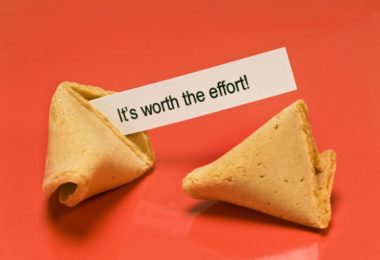
Nowadays every other individual seems like wanting to become a freelance yoga teacher. It’s easy to be a Yoga trainer by making yourself aware of the practice and participating in Yoga programs.
However, when you take up a certification course, you will be deemed as a professional, who recognises the medicinal, philosophical and spiritual aspects of the subject.
Freelance Certified Yoga Instructors, apart from guiding students in yoga practice and helping them learn poses and use correct forms, also provide guidance on Yogic science and other important elements that complement the practice, such as meditation, nutrition and therapeutic values.
If you are passionate about the practice and aim to benefit others with your knowledge, then you can be an independent professional yoga instructor. So, how can you become one? Read this blog to know more about yoga trainings and how to become a certified yoga instructor.
Yoga Instructor Job Role Be?
Essentially, you will be imparting in-depth knowledge about yoga, yoga postures and other mental and physical simulationyoga practice provides, to students and candidates who enrol in your classes.
Professionals in the Yoga Industry teach students via group classes, workshops and other fitness facilities. You can also be a personal yoga teacher and have your own yoga studio or fitness club.
As a Freelance Yoga Instructor, you can either associate with an already thriving fitness group or build your own yoga studio.
So, How Does One Become A Yoga Certification Instructor?
Before you start your career as a freelance certified instructor, you have to first complete a yoga training program from a Registered Yoga School (RYT) and then apply for the RYT certification.
There are different levels of RYT certifications that are given out, based on the number of hours of training and total hours of teaching.
Usually the hours are split into 200 RYS, 300 RYS and 500 RYS training programs.
As a beginner, you can start your journey by going through a 200 hour RYS training course. 200 RYS training course will be your foundation stone in your journey to advance Yoga practice and teaching.
In here, you will be acquainted with the several layers of Yogic Philosophy and Science. Once you complete your 200 hour training course, you will be eligible to enrol in the RYT 300 Hour. The 500 RYS course is the combination of both of the above courses.
Why 200 Hour Is Specified?
Yoga is a science and compiles of intricate theories and practical sessions. To learn everything, reflect in the theories and understand how to execute each practice or posture according to your physical and mental abilities, you need devotion and continuous practice.
The programs entail two hours of practice sessions each day, where your physical and mental strength shall be tested.
What Will Be Your Takeaways From The 200 Hour RYT?
- Study of different Asanas (alignment, variations and modifications)
- Observation of science behind the postures and alignments
- Psychology of Yogic Science
- Principles of anatomy and physiology
- Use of props to help improve postures
- Command cultivation through voice modulation
- Sanskrit names and terminologies of postures
- Yoga philosophy, health benefits and hypothesis
- Yoga and spiritual science
After you complete your 200 hour program, you can also train to work with specific groups. These are extension programs available that specialises in different subjects, such as kids’ yoga, pregnancy yoga, yoga for the elderly and so on.
Here’s an Expert Suggestion…
Careerlancer suggests you that before registering for the training program, it is ideal to develop a consistent yoga practice. A prior yoga regime will help your body to easily adjust with the physical rigor. Most importantly, your mind will be prepared for the asanas and their norms.
How Can You Get A Yoga Certification?
Your first step of becoming a certified yoga instructor will be finishing the 200 Hour RYT course. If you wish to continue honing your skills, you can go for the 300 hour program.
After completing the first phase, you would ideally be eligible to assist a senior yoga teacher for few months to fast track your path of expertise.
However, there is no specific time frame for mastering the skill; yoga is very hands-on, the more you practice it in your life, the better equipped will you be to train others.
When it comes to certifications, you have to first decide on the style of yoga you are interested in. The final step would be registering as a Yoga Teacher with Yoga Alliance of your country.
Once registered, you will be listed in their international directory as a certified yoga instructor, who has met their minimum qualifications for teaching yoga.
What After That?
Trainers who are registered with Yoga Alliance are required to complete 75 hours yoga practice through workshops and additional courses.
One of the additional certifications that many health facilities and fitness centres look up in instructors is CPR certification. You can take a CPR course while enrolled in the RYT program.
Here’s what you need to know…
Practice makes a man perfect, and it applies more in this field of education than anywhere else. Your training would provide you with lots of hands-on knowledge and intricate theories about Yoga, but that would be just the entrance to an extremely powerful science.
Many trainees feel somewhat apprehensive about starting their own school or classes because of the realization that they know very less about Yoga.
But indeed, formal training is extremely crucial, especially in the later stages of your career, when you will be fully established and will be conducting your own events and seminars.
Don’t feeldejected….
To be a great teacher, you have to be dedicated in your practice and in exploring yoga by attending workshops, seminars and events, and by conducting your own researches. However, the most important element of mastering any art or skill is learning through your experiences.
Yoga is not limited to asanas, it is deeper than that as it also includes spiritual and philosophical elements, such as the power of pranayama or meditation.
You need a lot of mental agility and simulation to determine and articulate to your class what exactly is happening and what should be the course of action.




